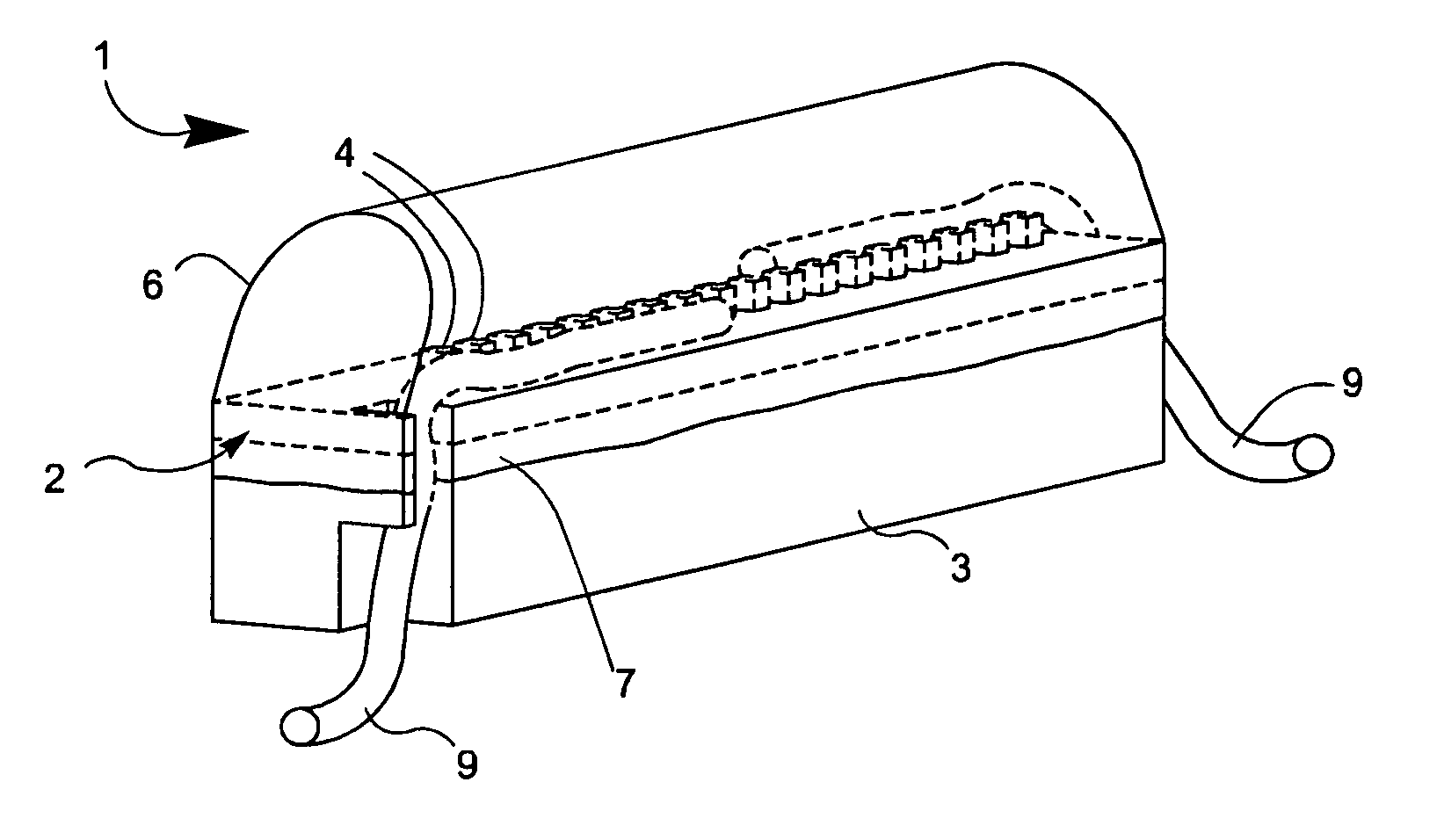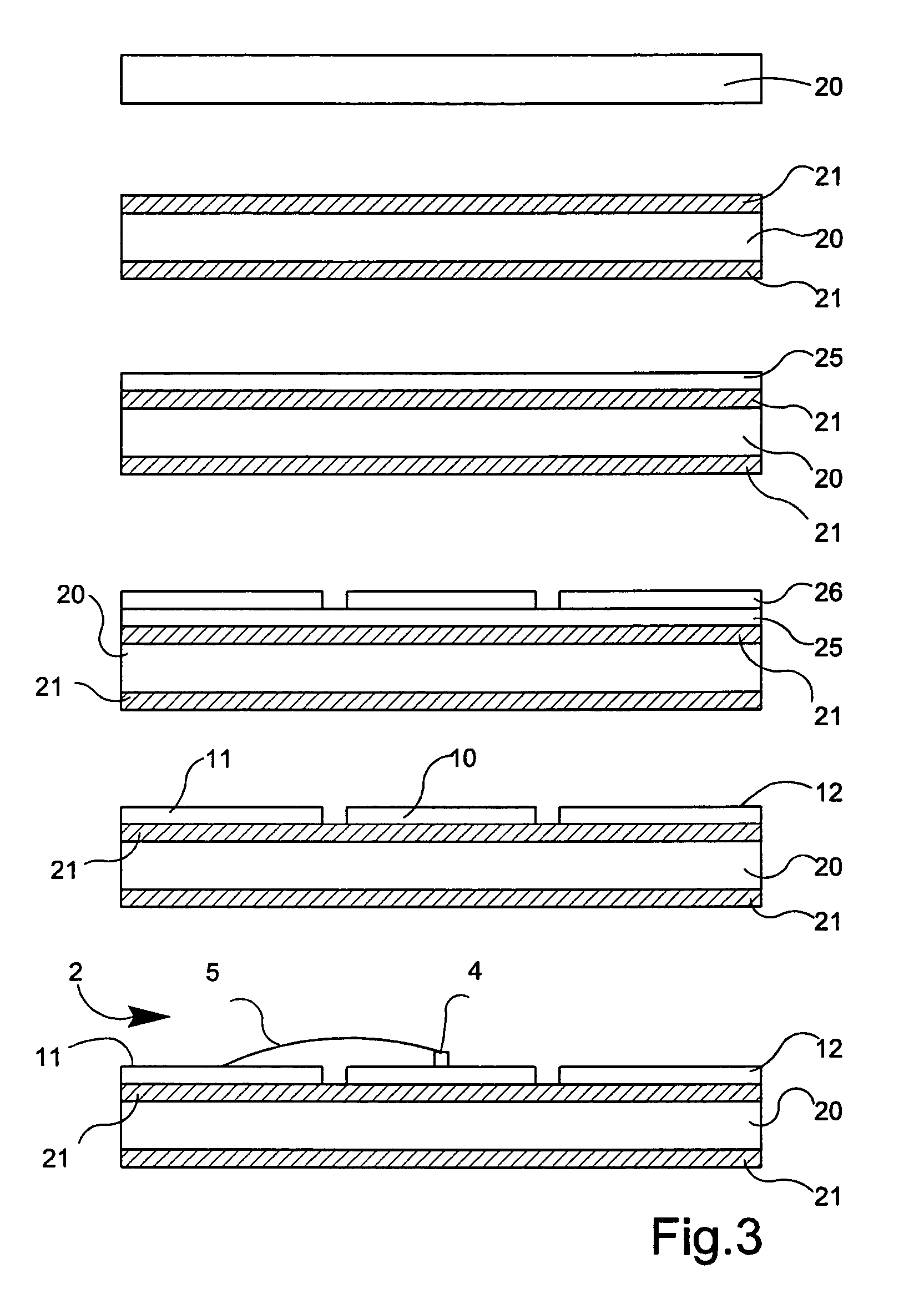Illuminator
a technology of illuminators and light sources, applied in lighting and heating equipment, electrical equipment, etc., can solve the problems of low output power, low packing density, and inability to readily obtain led attributes
- Summary
- Abstract
- Description
- Claims
- Application Information
AI Technical Summary
Benefits of technology
Problems solved by technology
Method used
Image
Examples
Embodiment Construction
[0049]Referring to FIG. 1 an illuminator 1 is illustrated. The illuminator 1 has a linear configuration for emission of a uniform line of light on a target with a high power density. The illuminator 1 may be used alone or a number of them may be mounted together in a desired configuration according to the application.
[0050]The illuminator 1 comprises a planar substrate 2 mounted on a brass heat sink 3 of rectangular block shape. The substrate 2 supports a line of light emitting semiconductor die 4 and bond wires 5 for activation. A semi-elliptical body 6 of transparent epoxy is moulded over the substrate 2 and it overlaps the sides of the substrate 2 and the top of the heat sink's sides to form an hermetic seal. The overlapping portion is indicated by the numeral 7.
[0051]As shown in FIG. 2 the substrate 2 comprises a series of central tri-metal pads 10(a), 10(b), 10(c), and 10(d). There are also a series of lateral wire bond tri-metal pads 11(a), 11(b), and 11(c) on one side and a s...
PUM
 Login to View More
Login to View More Abstract
Description
Claims
Application Information
 Login to View More
Login to View More - R&D
- Intellectual Property
- Life Sciences
- Materials
- Tech Scout
- Unparalleled Data Quality
- Higher Quality Content
- 60% Fewer Hallucinations
Browse by: Latest US Patents, China's latest patents, Technical Efficacy Thesaurus, Application Domain, Technology Topic, Popular Technical Reports.
© 2025 PatSnap. All rights reserved.Legal|Privacy policy|Modern Slavery Act Transparency Statement|Sitemap|About US| Contact US: help@patsnap.com



